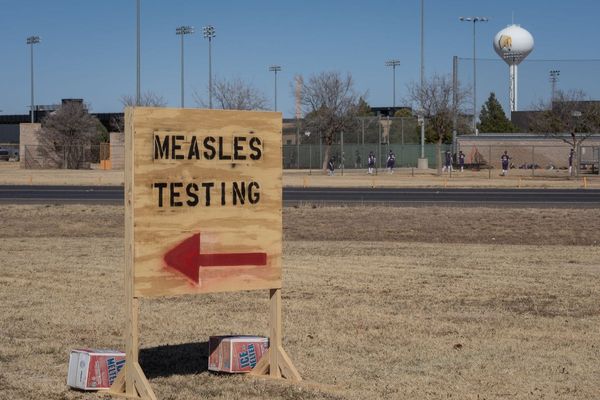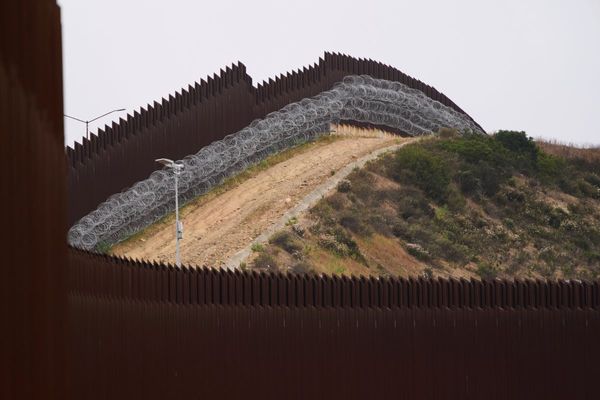
It has been a challenging year for Head Start.
The Trump administration first froze funding and cut staff, forcing many centers to close temporarily or permanently. It then asked Congress to eliminate the early childhood education program in a leaked budget proposal (the White House ultimately reversed course).
Then, in July, the Department of Health and Human Services (HHS) released an executive order excluding some immigrants from accessing a range of federal programs, including Head Start. Its argument: Head Start is equivalent to public welfare, which unauthorized immigrants have not been able to access since the Personal Responsibility and Work Opportunity Reconciliation Act (PRWOR) of 1996. And Head Start advocates are waiting to learn whether enforcement will begin this week or sometime soon.
The term “unauthorized” includes not only undocumented people but also those who entered the US legally but do not qualify for public benefits, such as asylum applicants; trafficking victims; and recipients of Deferred Action for Childhood Arrivals (Daca), a program that protects people who came to the US as undocumented minors from deportation and allows them to work.
Head Start centers have said they have no protocols for verifying eligibility. The program doesn’t, for example, gather information on citizenship status.
Attorneys general from 20 states and a coalition of Head Start organizations filed separate suits in federal court, arguing that the order was unconstitutional. Following the lawsuits, the government backtracked, though only slightly: it delayed enforcement of the rule until 10 September, pending the result of the legal challenges.
Experts say this executive order is a broader attempt to disenfranchise immigrants from accessing a wide range of public services. “On its face, this appears designed to ensure that virtually all public supports are unavailable to unauthorized persons,” said Mark Greenberg, who formerly worked as deputy general counsel in the Department of Health and Human Services and also served in its administration for children and families.
He said that the government has “a very, very difficult case … The legal question for the courts at this point will be, ‘Is Head Start similar to welfare?’”
He believes that this argument will be very difficult to prove. First, welfare is almost always defined as cash assistance or its equivalents, welfare checks or electronic benefit transfer (EBT) cards, used for food stamps. Head Start programming is neither. In addition, PRWOR does not give federal agencies the power to define what counts as a public benefit. So the government has to argue that Congress always intended to define Head Start as welfare – something it has never done.
Should the executive order stand, it’s hard to estimate the possible impact on Head Start. Estimates suggest that the vast majority of the nearly 755,000 children currently enrolled are US citizens. Only 1.5 million children under 18 living in the US in 2023 were unauthorized, the most recent year for which statistics are available.
However, one particular part of Head Start is likely to feel the impact more deeply.
Migrant and Seasonal Head Start (MSHS) provides early childhood education and services to approximately 25,000 children whose families work in agricultural labor. These children range in age from infancy to five years old, and the program currently operates in 34 states.
The term “migrant” as used in MSHS does not refer to citizenship status. “In our world, a migrant means a family that is moving within a certain distance from their home in pursuit of work,” said Cleo Rodriguez Jr, executive director of the National Migrant and Seasonal Head Start Association (NMSHSA).
Nevertheless, between 37-45% of all farm workers are unauthorized and the order “raises the concern of chilling effects that go far beyond the families [in Head Start]”, Greenberg said. Parents may choose not to enroll eligible children to protect unauthorized family or friends from discovery, denying them the opportunities for social mobility and education that Migrant and Seasonal Head Start provides. And enforcement would theoretically apply to all families seeking Head Start services.
Soon after Head Start’s creation in 1965, program administrators realized that itinerant farm workers could not enroll their children in one location year-round. Migrant Head Start began in 1969 to support these families. Seasonal Head Start was added in 1999 as warmer weather due to climate change enabled more agricultural workers to work year-round in one location.
MSHS works the same as the other Head Starts in a few ways. It also serves infants and children up to age five. All enrolled children receive health services such as developmental and vision screenings and nutritional support.
And according to Rodriguez, some of the key features of Head Start’s larger programs began with standards set by Migrant and Seasonal Head Start. The program served children agedup to three years from the beginning, whereas Early Head Start only started in 1995. Similarly, it always offered extended hours so agricultural workers could spend as long in the field as necessary; conventional Head Start did not expand to full-day and year-round care until 1998.
“The program that supports agriculture families is really the model for all of Head Start,” Rodriguez said. “We’ve always served the infants and toddlers. We’ve always done the extended hours. We’ve always been flexible.”
Every program, by necessity, is different, dictated by the length and yield of each harvest season. “What works in Nebraska doesn’t necessarily work in central Florida, and what works in central Florida doesn’t necessarily work in central Michigan,” he said.
Variation even occurs at the same center from year to year. It’s common, Rodriguez said, for growers to ask MSHS staff to extend the program on short notice if the weather suddenly becomes more favorable.
MSHS can even be open six or seven days a week and for lengthy hours. “Programs can start deploying buses at 4.35 in the morning, and get the kids to school and put them back to bed,” Rodriguez said.
The flexibility that makes MSHS so useful for growers and families also makes it challenging to study, according to early childhood researcher Michael Lopez, who helped design Head Start studies while employed by the administration for children and families from 1991 to 2005.
“We would do an assessment at the beginning of the year, an assessment at the end of the year, and you look at progress over the year,” he explained. “A defined academic experience for an MSHS kid could be three months in this location, three months in that location,” he said. In addition, “a lot of these measures were developed for predominantly English-speaking classrooms”, not designed for students learning the language.
Nevertheless, Lopez said existing research supports the value of early education on children’s health and development no matter the program. “There’s no question in my mind that it has positive effects,” he said.
Multiple studies suggest that children of migrant farm workers have among the highest high-school dropout rates in the country, due to a combination of language barriers, frequent moves and even a need to work to support their families.
So when Rodriguez kept encountering MSHS graduates who not only completed high school but also went to college, one of his first projects as NMSHSA executive director was to start a summer internship program in Washington DC. Since 2012, 49 interns have worked for organizations including United Farm Workers, UnidosUS and the National Hispanic Caucus of State Legislators.
Maria Espinoza participated in the program in 2021 and worked in agricultural research and policy before starting law school at American University this year. The youngest of seven, she was born in South Carolina to migrant parents during the tobacco harvest. When the family settled in the agricultural community of Immokalee, Florida, they sent her to a center run by Redlands Christian Migrant Association (RCMA).
“It was one of the first organizations that we interacted with after we moved,” Espinoza said. She recalls walking to and from class with her parents, interacting with her teachers and her parents attending meetings after their long hours working in the fields.
“They were kind of a vehicle for how we settled into our community and the US as a whole,” she said, describing RCMA staff and centers as “pillars of the community”.
Two of her siblings found employment at RCMA, with Espinoza’s eldest sister eventually launching her own daycare business. Espinoza’s nieces and nephews now attend RCMA’s charter school.
“[MSHS] does so much to fill all those gaps and make a bridge so that both the families and their children are able to succeed,” Espinoza said.
Even if the executive order is struck down, families are already more hesitant to engage, according to Rodriguez. Some MSHS parents have already been detained by Immigration and Customs Enforcement (Ice).
“My parents were both migrant farm workers, and I also did work when I was a kid,” Rodriguez said. “So this is very personal to me.”
However, he still has a deep belief not only in the benefits of MSHS but also in America as a whole.
“We’re still the greatest country with the greatest opportunities,” he said.







